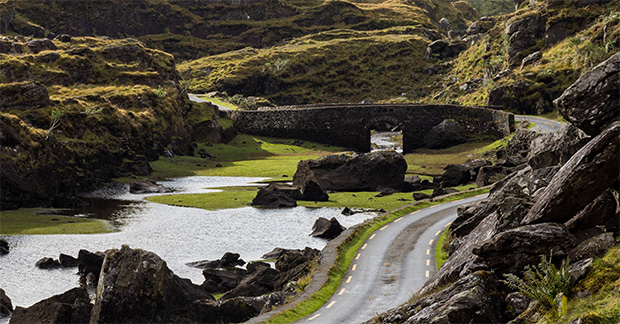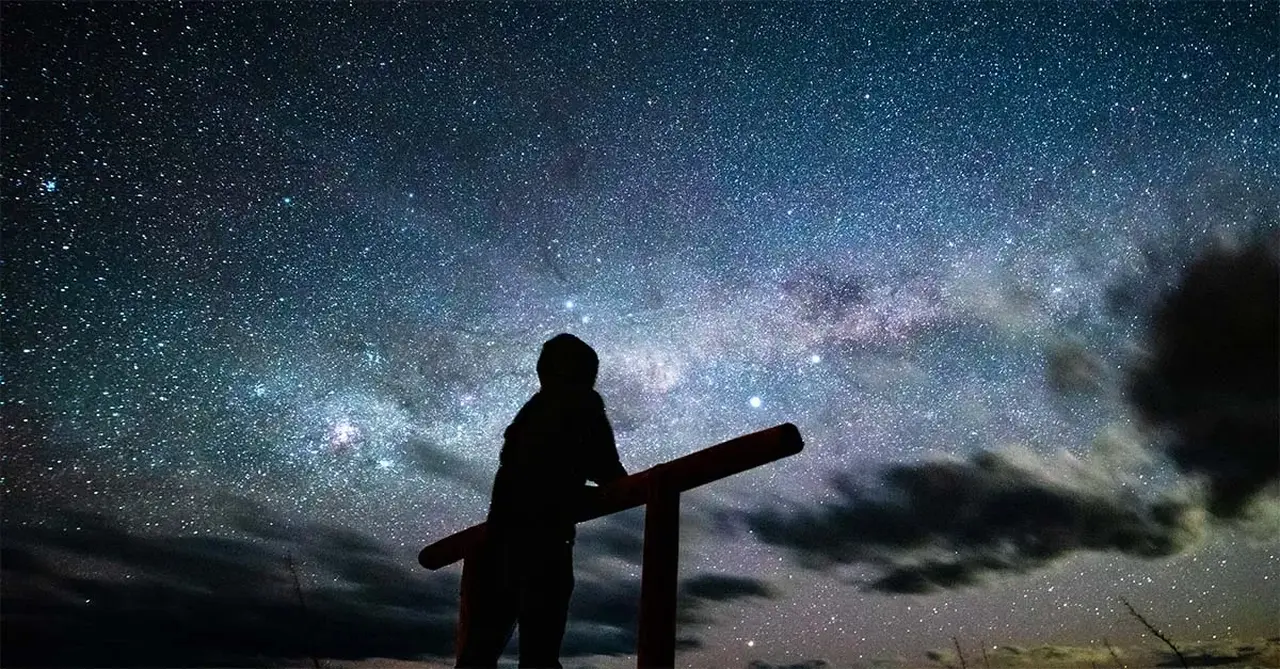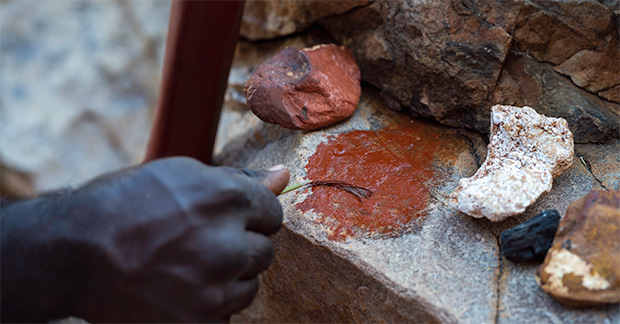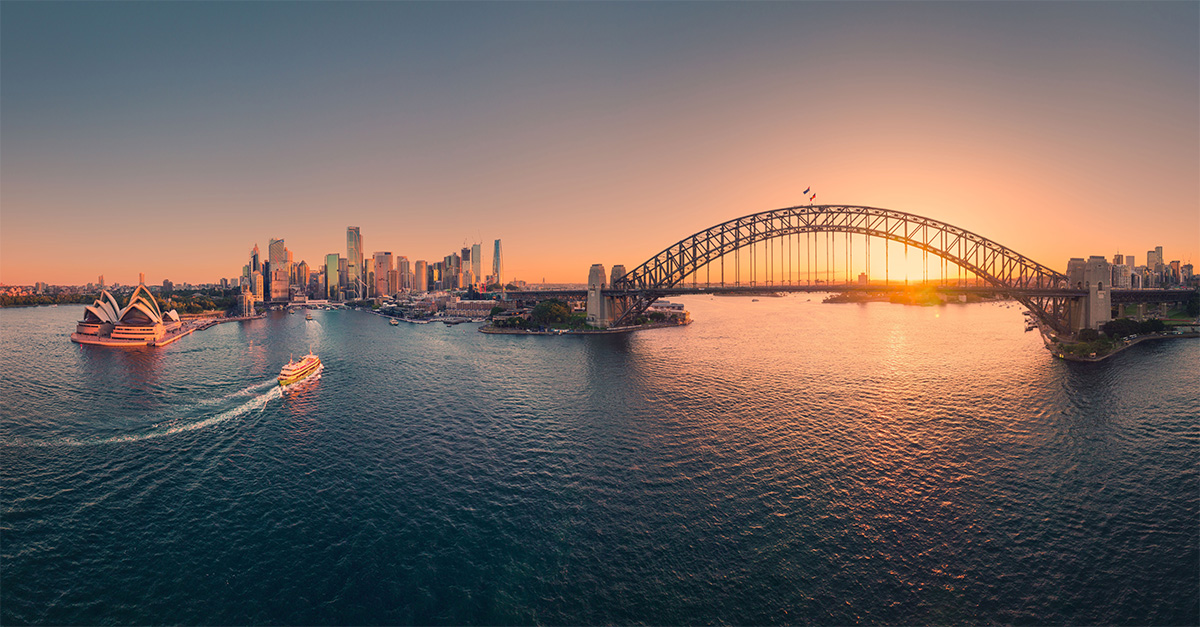An insight into Indigenous tourism experiences across Australia’s Northern Territory
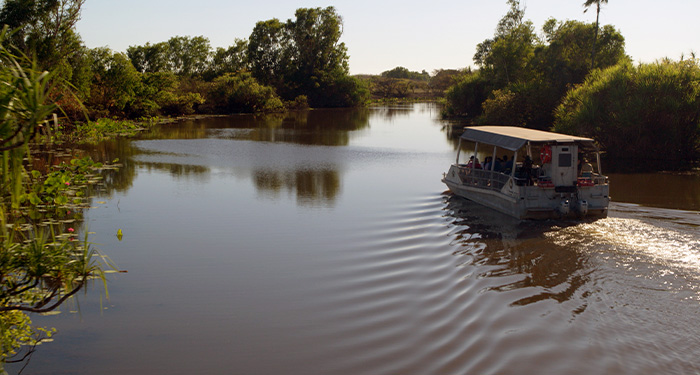
Indigenous history spanning thousands of years is now an integral part of a trip to the Northern Territory’s Top End, discovers David Whitley
Click here to download and save as a PDF
The Northern Territory’s embrace of Indigenous culture is obvious even before leaving Darwin airport. The shop brims with goods – candleholders, fold-up bags, plates, you name it – designed by Aboriginal artists. And the underside of the covered walkway to the car park is one giant Indigenous mural. This art, of course, is relatively new.
But under the sandstone shelter at Burrungkuy in Kakadu National Park, it goes back thousands of years. This rock art, a centrepiece of Autopia Tours’ one and four-day tours around Kakadu, is much more complex than it initially looks. The figures depicted tell stories of the Lightning Man who brings the storms and how the disgraced Namanjolg became the crocodile, and the style of art gives an indication of age. The deeper the red ochre, the older it’s likely to be, and the paintings of the ancient Mimi spirits here are believed to be up to 50,000 years old.

Kakadu National Park
Kakadu National Park is an extraordinary place, covering almost 7,700 square miles – almost the size of Wales. It is an unquestioned highlight of the Northern Territory’s Top End and is World Heritage-listed for both cultural and natural reasons. The landscape is a mix of largely untouched natural environments – vast birdlife-covered floodplains, rugged stone escarpments punctuated by dramatic waterfalls and sticky savannah woodland.
But it quickly becomes clear that it’s not easy to separate the natural and the cultural. On Yellow Water, a lily-sprinkled billabong, the cruise is ostensibly about spotting crocodiles. There are plenty of them in this wetland, some catching the sun on the banks, some gliding through the water on the hunt. Boat skipper Dennis Miller says: “Anyone falls in, I’ll throw out a life ring. And whatever’s left, I’ll pull back in.”
But Dennis and his people have lived alongside the crocs for millennia. He says that the Aboriginal groups in Kakadu are still allowed to practise their traditional customs. “We only hunt crocodile when there’s a ceremony, family meeting or a funeral,” he says. Despite all the information about how crocs lie in wait for prey, or the power of their bite, the cruise is at its most absorbing when culture and nature intersect. “We were taught from a really young age, you only hunt what you need,” says Dennis.
On Yellow Water, a lily-sprinkled billabong, the cruise is ostensibly about spotting crocodiles
“Our calendar tells us what to eat and when to eat. If you eat ducks all year, there will be no ducks left for your children and grandchildren.” There’s much more of this insight at the nearby Warradjan Cultural Centre, which proves perspective-altering for visitors.
Here, the displays show there are six seasons in the Top End, not four or a simplistic wet and dry season. They also show how neighbouring language groups now look after the land where the original custodians are no longer with us, and delve into the complexities of who is permitted to marry and who is not. Tools, bush tucker, ancestral beings and sacred places are covered in a fascinating introduction into a completely different mindset on how the world works.

Arnhem Land
Tradition still lives on in Kakadu, albeit blended with whitefella ways. But in the neighbouring Arnhem Land, a 37,400 square-mile swathe of remote Aboriginal-owned country, custom still rules. Entering Arnhem Land feels like a real privilege. Permits are required for visitors, and for half the year, the road onto the land is inaccessible due to floodwater. Kakadu Cultural Tours is one of the few operators that takes visitors into Arnhem Land, with its Arnhemlander 4WD tour venturing high into Stone Country.
Climbing up a rocky outcrop, we pass a ceremony site that has apparently been there three times longer than the Pyramids of Giza, towards a ledge with staggering views out to Kakadu. But it’s what’s in the crags that’s most astonishing. The shelters and caves are absolutely covered in rock art, on a much greater scale than its neighbouring land in Kakadu. What is striking about post-pandemic tourism in the Northern Territory is that you don’t have to necessarily seek out Indigenous culture to encounter it.
On the Tiwi Islands, the Sealink ferry’s Tiwi by Design tour is very much centred on local artists, but the fishing and fun-focused Tiwi Island Retreat is not. Yet even here, among the mud-crabbing adventures, beach bonfires and helicopter rides to remote waterholes, an Indigenous experience run by the islanders is on offer.
We pass a ceremony site that has apparently been there three times longer than the Pyramids of Giza
Elsewhere, acknowledgements of traditional owners are the usual way to kick off a tour, and Indigenous ingredients are seeping into menus. Even the distillery Charlie’s of Darwin – which runs make-your-own-gin classes – majors on foraged Kakadu plums, wild rosella and waterlily as botanicals.
This Indigenous fusion into the Northern Territory experience is no accident. Tony Quarmby, Tourism NT’s executive director of marketing, says: “Working alongside the Aboriginal Tourism Committee, the vision of the Northern Territory is to become the undeniable Australian leader in the Aboriginal tourism sector.
“The Northern Territory is home to a rich and diverse range of more than 150 authentic Aboriginal experiences – many of which are in local Aboriginal communities.” Indigenous culture is no longer a token add-on in the Top End – it’s an integral part of the experience.

Selling tips
By Lucy Pares, UK market manager, Tourism NT
? “Clients will get a lot more out of the Kakadu rock art if booked on a guided tour. There is so much to learn and the guides are incredibly knowledgeable. Guests will get much more out of the experience.”
? “Don’t just book a day tour to Kakadu or Katherine. There’s so much to do in each place, and you miss out on a lot due to the drive time. We’d recommend two nights in both.”
? “Katherine is not just about the gorge cruise. Book the Top Didj Cultural Experience too. Visitors will learn about Aboriginal culture, painting and living off the land.”

Book it
Audley Travel offers a 14-night trip from £5,735 per person, travelling from Darwin to Adelaide, including stays in both Kakadu and Uluru-Kata Tjuta national parks. The price also includes international and internal flights, car hire and transfers.
audleytravel.com
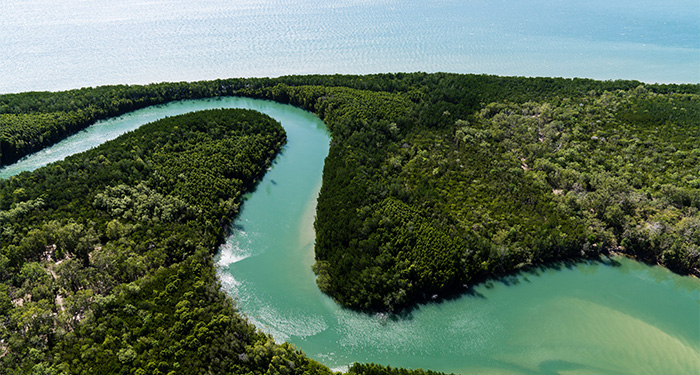
PICTURES: Tourism NT/Peter Eve, Hello Emily, KWP!
Wintjiri Wiru
The Red Centre’s newest tourist attraction
By Natalie Marsh
As we take our seats on the viewing platform, gazing up at the star-studded sky, I know we’re on the cusp of experiencing something special. This is the world premiere of Wintjiri Wiru – an immersive light and sound show that uses about 1,100 drones to tell a section of the Mala story, a creation narrative belonging to the local Aboriginal communities.
Launched by Voyages Indigenous Tourism Australia, and produced by world-renowned studio Ramus, the show was created in very close collaboration with Anangu (the local people), from its inception to the finished result, and is shown just outside Uluru-Kata Tjuta National Park. The trees and the arid landscape below double up as a projector for lights and lasers that dart across the desert floor. And speakers are built into the viewing platform we’re sitting on, making it a truly all-encompassing experience.
There was an extensive consultation process, with a group comprising 10 senior Anangu, during which the show was created and examined “frame by frame”. “Everything had to be approved,” explains Matthew Cameron-Smith, chief executive of Voyages Indigenous Tourism Australia. Guests at Voyages Ayers Rock Resort can choose from two experiences: the adult-only Sunset Dinner, comprising picnic baskets with food and premium wines, plus cocktails and canapés; or there’s the After Dark experience, for guests of all ages, with snacks included.
Wintjiri Wiru is a spectacular display of old meets new, where ancient culture is depicted in an innovative way in a truly unforgettable show.
Read more about Wintjiri Wiru at x.travelweekly.co.uk/destinations">travelweekly.co.uk/destinations

PICTURE:Voyages Indigenous Tourism Australia
Anangu hold the Mala story, from Kaltukatjara to Uluru, through a drone, sound and light show designed and produced by Ramus
Read more
x.travelweekly.co.uk/destinations/5-top-long-haul-destinations-for-disabled-travellers">5 top long-haul destinations for disabled travellers
x.travelweekly.co.uk/destinations/warm-weather-expedition-cruise">Where to go on a warm weather expedition cruise
x.travelweekly.co.uk/destinations/combining-wine-and-wildlife-trips-in-south-australia">Combining wine and wildlife trips in South Australia
You have viewed both of your 2 free articles this month as an unregistered user
To continue reading, please register with Travel Weekly free of charge, or if you have already registered click here to login

